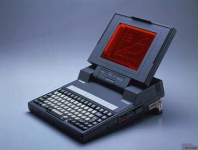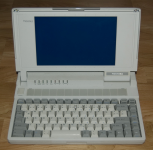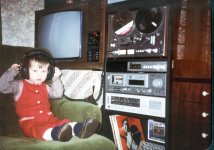Zarathustra
Cloudless
- Joined
- Jun 19, 2019
- Messages
- 4,390
- Reaction score
- 4,732
Still rockin' S-Video over here. My SNES, Super Famicom, N64, Gamecube, and Saturn all use S-Video on my CRT TV. I also previously used S-Video with PS1 and Dreamcast. In the 2000s I upgraded Dreamcast to VGA and it's been on that ever since. For PS2 I used Component cables. Wish I could've used Component with GCN but I laughed at Nintendo's $30 prices for the cables (there were no 3rd-party ones). Joke's on me cuz in the following 20 years the price range of those things ha been $200-$300. I could and did use Component with GCN games on Wii, but I've seen stuff online that showed that GCN's Component video output quality is better than Wii's. Ah well. X360 was the first system I had with HDMI output. My Neo-Geo C-MVS supports S-Video, Composite, Component, and RGB/SCART. I have the cables for all of those, but I am currently using Component. My NES and Genesis are the only systems on Composite.
S-Video was a huuuuuge jump for me. I was still on RF switch and RF modulator most of the way through 5th-gen (so I had to deal with mono sound on top of sh1t video quality). I eventually started plugging in Composite cables for game consoles into my VCR, but the VCR still went to the TV through RF. It wasn't until 2003 when I got a new TV for my berfday did I finally have access to S-Video (and Component). Going from RF to S-Video was a world of difference. I was always pissed off that my HDTV from 2009 (which I am still using) didn't have S-Video. Of course modern HDTVs don't have analog inputs at all anymore. Not that it really matters, 6th-gen-and-earlier consoles look like @ss on HDTVs without an image processor like the xRGB Mini Framemeister or the OSSC (Open Source Scan Converter) anyways. At the very least you should be using a decent HDMI converter for your classic systems. But yeah, I still love me some S-Video. Quite a noticeable jump over Composite.
Aaaaaaahhhhhhh, those final Trinitrons, so awesome...
I had all kinds of switch-boxes back in the 4th-gen, 5th-gen and 6th-gen days. Most of the ones I used were from Pelican. I like Pelican's stuff but most of the switch-boxes I had from all brands eventually crapped out on me. Some of them needed external power to prevent degradation of the video signals, so they had tiny AC adapters I had to account for on my surge protectors. The ones I am using now are Sony SB-V40S units (which hold image/audio quality without needing external power), and so far they've been the best I've ever used. No Component support though.
Ah, I played with friends older brothers 2nd gen consoles (mostly Atari's) and owned a 3rd gen (NES) but after I got my first PC of my own in 1991, I never looked at a console again. It was all VGA connector from ~1991 until ~2005 when I tried tried my first DVI connector
I briefly tried using a VGA to BNC adapter cable in 2001 on my Iiyama Visionmaster Pro 510 after hearing it supposedly could increase visual quality, but the quality was actually worse than just using the VGA input (color fringes etc.), so I stuck with VGA.



